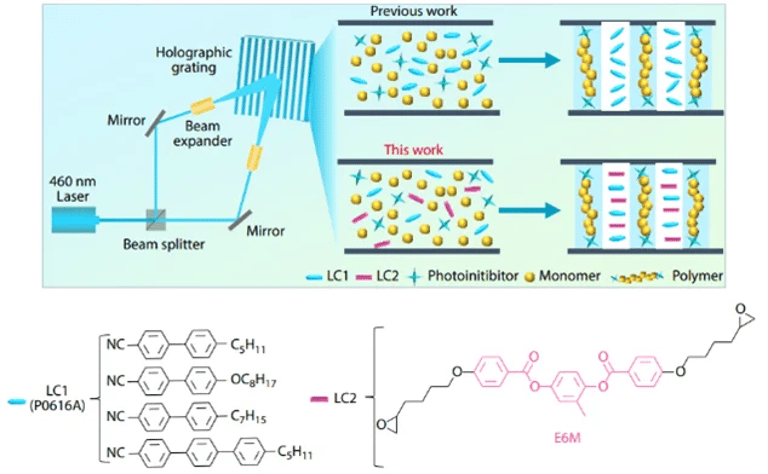Breakthrough in Holographic Polymers to Revolutionize AR Displays with Thinner, More Efficient Designs
September 3, 2024
Researchers from Huazhong University of Science and Technology have made a significant breakthrough in holographic polymer nanocomposites by incorporating the liquid crystal E6M.
Professor Hai-Yan Peng, the study's corresponding author, highlighted that this advancement could revolutionize augmented reality (AR) device design by enabling thinner and more efficient displays.
The study achieved a refractive index modulation of 0.050 at 633 nm with only 5.0% haze at a 5-weight percent concentration, showcasing the material's potential.
These composites exhibit a high diffraction efficiency of 96.2% at a minimal thickness of 5 micrometers, addressing the demand for compact and high-performing optical materials.
The incorporation of E6M significantly enhances refractive index modulation while reducing haze, leading to more efficient AR devices.
Published in the Chinese Journal of Polymer Science, the study has implications for the development of more effective and portable AR systems.
These advancements may facilitate broader adoption of AR technology across various sectors, including healthcare, education, and entertainment.
Holographic optical elements (HOEs) are crucial for AR displays due to their optical efficiency and design flexibility, yet current materials have limitations that affect performance.
Current materials restrict refractive index modulation, which impacts AR performance by limiting field of view and brightness.
The research was supported by the National Natural Science Foundation of China and various analytical facilities, underscoring its significance.
The ongoing efforts to develop new materials aim to enhance refractive index modulation, which is vital for improving AR technology.
High optical performance combined with reduced thickness and low haze will enable the creation of more compact and efficient AR devices.
Summary based on 2 sources
Get a daily email with more Science stories
Sources

Phys.org • Sep 3, 2024
High-refractive-index-modulation nanocomposites for augmented reality displays
AZoNano • Sep 3, 2024
Harnessing Liquid Crystals for Advanced AR Display Materials